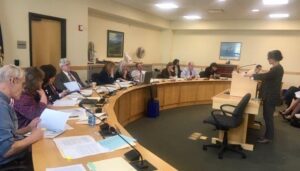
As drug price transparency measures proliferate across states, the National Academy of State Health Policy (NASHP) has released revised model transparency legislation featuring a common data set to reduce reporter burden and yield standardized, actionable data that will be comparable across states. The data — to be reported by manufacturers, pharmacy benefit managers (PBMs), wholesalers, and insurers — will help state policymakers understand what is driving high drug prices through a comprehensive look across the entire drug supply chain.
This 2.0 version of NASHP’s model transparency bill also contains stronger penalties for failure to report. States will have the ability to audit any data submitted, and require a reporting entity to submit a corrective action plan for reporting deficiencies. If reporting entities do not provide the required data or if the data they provided is inadequate, the model bill allows states to invoke subpoena authority.
NASHP developed the model bill and common data set in collaboration with a work group of states currently implementing or considering transparency laws and Mathematica Policy Research. Last week, Maine State Sen. Eloise Vitelli introduced legislation based on NASHP’s updated model transparency legislation. The model bill is available in a streamlined formed as enabling legislation, as well in a longer, comprehensive version that includes in-depth information detailing the reporting requirements of the minimum data set. Additional information about the legislation, including reporting thresholds and data elements that must be reported, are available in this Q&A document. In coming weeks, NASHP will also publish customized reporting templates for manufacturers, PBMs, wholesalers, and insurers.
While NASHP’s model transparency bill builds off existing transparency measures, the common data set requires the collection of additional information not otherwise publically available, including specific information about past and projected costs and revenues at the individual drug level. Some of this information may be considered proprietary, and the model bill includes language to protect it while still requiring an annual report and public hearing to share and explore findings – although in a manner that does not reveal information specific to any one reporting entity. This reporting will provide states with more information to determine what drives high prices – and how to take effective action to address them.
States interested in this model legislation will have access to NASHPs technical assistance. Please contact Jennifer Reck for more information.



